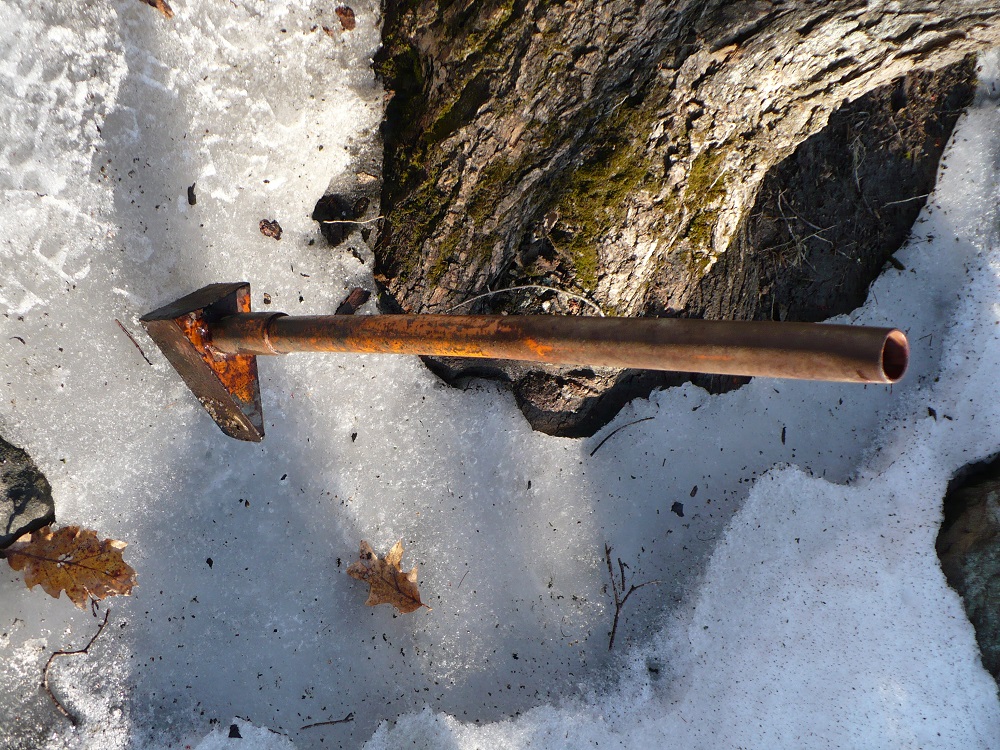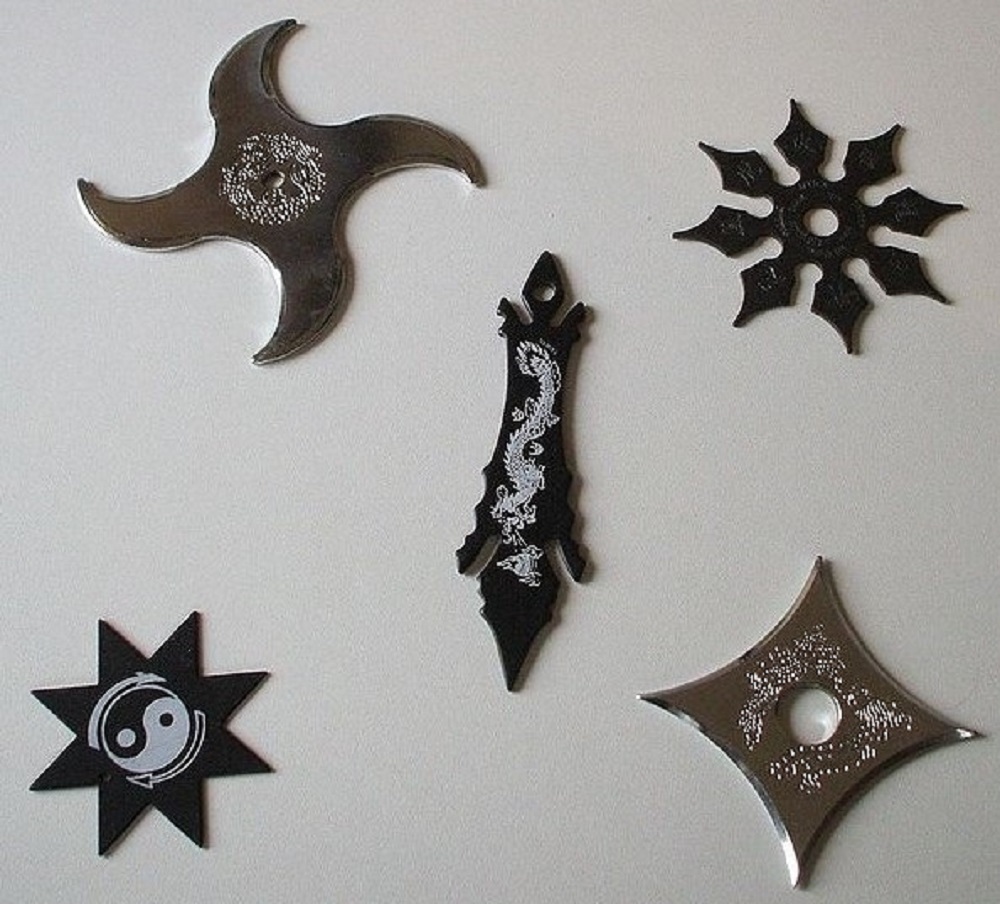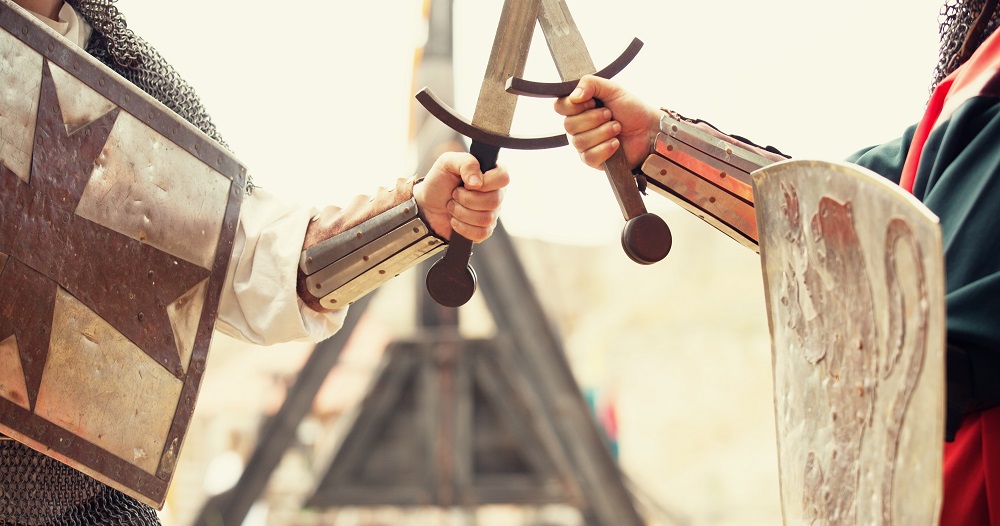These brutal historical weapons blew my mind. Do you dare to continue reading?
For those who don’t know me or for those who are new to my blog, I am James. I’ve spent years studying the history of warfare, civilization, lost worlds, and a little bit of sci-fi, but my main focus has always been the history of my country, America.
However, in the following lines, I will write a comprehensive article about historical weapons that absolutely blew my mind because of how brutal they were. Can you believe that people used them in wars to protect themselves and their land? Modern warfare focuses on speed and accuracy, but traditional warriors wanted to make their enemies suffer. Better weapons meant more pain and horror for their opponents.
In my research, I’ve encountered some really terrifying examples, and I’d be lying if I said I didn’t get chills, but I would rather not spoil it for you in the first paragraphs, so here are some of the most brutal historical weapons.

Maul
I begin the list with one of the brutal historical weapons with the maul. If you’re playing video games, especially things that involve barbarians as characters, you’re probably familiar with this weapon in action. However, for those who don’t know, the maul is a nasty blunt force weapon that resembles a modern sledgehammer, was first used by the French people. Originally used primarily as tools rather than weapons, mauls have been used for combat by a variety of factions over time.
Even against armored enemies, this two-handed blunt weapon could inflict severe wounds with a single blow during combat. Its impact was so powerful that it could knock opponents off balance with upper-body blows or destabilize them by hitting their legs. In addition to its physical strength, warriors valued it for the psychological advantage it provided them in combat.
Roman Scissor
The Roman gladiators used the Roman scissor, as its name suggests. The intriguing thing is that this particular weapon doesn’t exactly, well, look like a pair of scissors. The weapon is composed of two parts: a long, thin, cylindrical pipe with a crescent-shaped blade at the end and a long tube that shields the gladiator’s arm. The weapon gained popularity among fans in the audience because of its distinctive appearance.
Gladiators of the retiarius class, whose specialty was their net-like weapon, frequently engaged in combat with the scissores class. Additionally, the arm’s tube-like structure served as a shield to deter attacks. The weapon’s form and composition made it deadly, adaptable, and able to deflect slashing and stabbing blows from an opponent.
Morning Star
As an avid fan of the Lord of the Rings books, I had the pleasure to “meet” the weapon Morning Star when the author described the Cave Troll. So, now you will probably be confused, thinking that this is just a made-up weapon, but no, it isn’t.
In the fourteenth century, morning stars became widely known in Germany. Although it hasn’t been checked, the name “Morgenstern” initially seemed to be referring to the head’s star-like shape. Similar to a mace, which was created somewhat independently, is the Morning Star. The mace transitioned from wood to metal, but the morning star maintained its wooden shaft.
It was one of the most brutal historical weapons, used by both horsemen and infantry in the Middle Ages, when swinging it at your opponent was the main attack tactic. Based on the appearance of the Morning Star, the enemy had no chance of surviving it. These weapons were usually 7 feet long, with around 54 centimeters wide top spike.
Bagh Nakh
Do you think the morning star was a dangerous-looking weapon? You haven’t seen Bagh Nakh! The bagh nakh, also called the bagh naka, or “tiger claws,” is an ancient Indian weapon that simulates claws.
The claws of large cats served as the model for the weapon. The weapon employed four or five curved blades to cut through muscle and skin. The weapon’s side has two holes that the user can insert their thumb and pinky finger into to hide the blades inside their palm. Its length was usually around 6 inches (the claws) and 1.75 inches (the side spike). It was a light but deadly weapon to carry because it weighed only 2 oz.
Additionally, a knife-like weapon that could be used for thrusting and stabbing was added to the sides. Shivaji, a Marathi warrior who used the bagh nakh to kill Moghul general Afzal Khan, is often associated with it.

Shuriken
Who’s a fan of Japanese culture? Besides becoming popular because of their anime and music, the Japanese are also famous for their history, which is both interesting and brutal. If there is interest in this, I promise I will write an article about this too.
Among the most brutal historical weapons, there is the shuriken, often known as the ninja star, that was made of heavy-grade steel and weighed around 5.3 oz. Instead of being used in direct combat, it is used as a weapon that is hidden for self-defense. There are various types of shuriken, but the most well-known in popular culture is the hira shuriken. It is a star-shaped pointed weapon with different styles and numbers of edges.
Coins or metal with sharp edges are used to make it. The eyes, hands, face, and other exposed body parts are particularly susceptible to shuriken attacks. The samurai frequently used it as a component of their weapons. The shuriken’s effect was to produce an attack that appeared to be made by an unseen swordsman.
Zhua
I will stay a bit longer on the Asian continent to learn about one of the weirdest historical weapons, which is called Zhua. In Chinese, the character for zhua translates as “claw” or “animal feet.” The weapon has a long handle and a figure that resembles claws with sharp edges. Compared to other brutal historical weapons mentioned above, this one’s purpose was to tear away the enemy’s shields and weapons, not to actually hurt them directly.
However, even if this wasn’t the direct purpose of the zhua, it could still impale an opponent and then tear them apart. If used professionally, it can pull a soldier from a mounted horse. Iron zhuas are not only great for bludgeoning due to their weight, but they also have sharp claws that add an extra layer of danger. These features can put opponents at greater risk, making them quite dangerous.
War Scythe
Nope, I’m not talking about the Grim Reaper’s weapon, even if it resembles all the folkloric stories’ descriptions. The war scythe was just another scary weapon used by the long-gone civilizations.
Because of their weight and aerodynamic shape, war scythes were used as both a stabbing and a slashing weapon. The weapon, which can pierce a metal helmet, is believed to have started as a peasant improvised weapon before being modified for military use.
The version used by peasants in uprisings was arguably worse than the military version because it was frequently blunted from farming, meaning the victim would probably survive multiple slashes before passing away.
Khopesh
I am closing the list of some of the most brutal historical weapons with the Khopesh. Few people are familiar with the Khopesh, which is understandable given its rare mention in books. The khopesh dates from the Ancient Egyptians, and it was made of bronze and steel, weighing around 7 lb and measuring 22 inches. Egypt did not have many swords, and aside from the khopesh, daggers and short swords of various kinds were commonly used.
Khopesh could have been used as a bludgeoning tool and a hook. Iron or bronze was frequently used to make it. Some pharaohs were discovered in their tombs, while others have been depicted alongside the khopesh.
To write this article, I used various sources; in addition to documentaries, one of the best being Weapons of War: The Evolution of Destruction Through History, I also read a couple of books. If you’re interested in studying this topic in depth, you may go for The Archaeology of Weapons: Arms and Armour from Prehistory to the Age of Chivalry (Dover Military History, Weapons, Armor) that can be found on Amazon, but also for the book Weapon: A Visual History of Arms and Armor, a comprehensive volume that traces the evolution of primitive weapons with pictures and accurate informations based on studies.
Both of them are a bit pricier, but I’d say it’s worth having them in your collection. If you’re fortunate, you might also find them in local thrift shops!
Are there any other brutal historical weapons that you are curious about? I could write a second part of the article if my readers ask for it. Feel free to write your suggestions in the comments section below the article. See you next time!
New around my page? Check out another article that I wrote recently: 6 Strange Ideas That Shaped 1970s Thinking.
